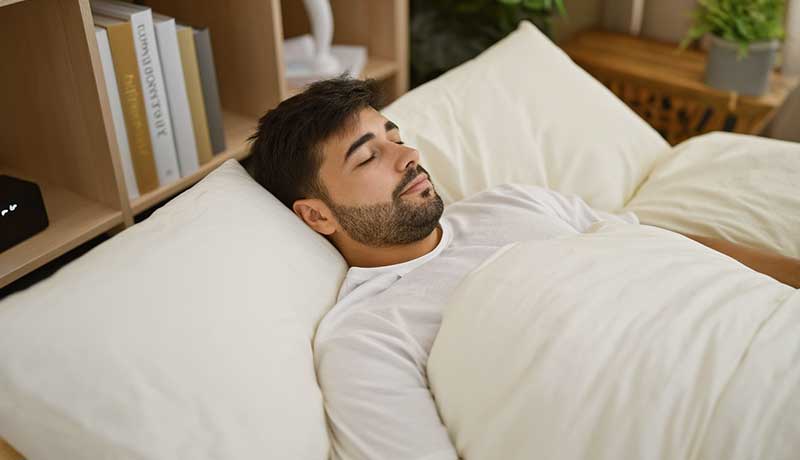Wellness ➢ Sleep Optimization
5 Science-Backed Ways to Optimize Your Sleep in 2025

Quality sleep is the foundation of optimal health, yet millions of people struggle with poor sleep quality that affects every aspect of their lives. As we advance into 2025, scientific research has revealed new insights into sleep optimization, while innovative wellness technologies make it easier than ever to achieve consistently restorative rest.
The sleep revolution isn't just about getting more hours in bed—it's about maximizing the quality of every sleep cycle. From circadian rhythm regulation to advanced sleep tracking, these evidence-based strategies combine cutting-edge science with practical applications that fit seamlessly into your daily routine.
1. Master Your Circadian Rhythm with Light Therapy
Your internal body clock, or circadian rhythm, is perhaps the most powerful factor in determining sleep quality. Recent research shows that strategic light exposure can reset and optimize this natural cycle within days. Morning bright light exposure (10,000 lux for 20-30 minutes) helps establish a strong circadian signal, while limiting blue light exposure 2-3 hours before bedtime allows natural melatonin production.
Advanced light therapy devices now use personalized algorithms that adjust light intensity and color temperature based on your sleep patterns and lifestyle. These systems can simulate sunrise and sunset, helping your body maintain optimal circadian rhythm even in environments with limited natural light.
2. Optimize Your Sleep Environment with Smart Technology
The ideal sleep environment maintains a temperature between 65-68°F (18-20°C), with minimal noise and light disruption. Smart sleep systems now automatically adjust room temperature, humidity, and air quality throughout the night to maintain optimal conditions for each sleep stage.
White noise machines and sleep-optimized air purifiers create a consistent, clean environment that promotes deeper sleep. Advanced models can detect when you enter different sleep phases and adjust environmental factors accordingly, ensuring you wake up feeling refreshed rather than groggy.
3. Use Advanced Sleep Tracking for Personalized Insights
Modern sleep tracking goes far beyond counting hours. Devices now monitor heart rate variability, blood oxygen levels, body temperature, and movement patterns to provide detailed insights into sleep quality and recovery status. This data helps identify specific factors that improve or impair your sleep.
The most effective sleep trackers provide actionable recommendations based on your unique patterns—suggesting optimal bedtimes, identifying foods or activities that affect your sleep, and even predicting your best wake times based on natural sleep cycles.
4. Implement Progressive Muscle Relaxation and Breathing Techniques
Stress and physical tension are major barriers to quality sleep. Progressive muscle relaxation (PMR) combined with controlled breathing techniques can activate the parasympathetic nervous system, preparing your body for restorative sleep.
Apps and devices now guide users through personalized relaxation routines, using biofeedback to adjust techniques based on real-time stress levels. These systems learn your preferences and effectiveness patterns, creating increasingly personalized relaxation protocols.
5. Choose Sleep-Supporting Nutrition and Supplements
What you eat and when you eat it significantly impacts sleep quality. Foods rich in tryptophan, magnesium, and complex carbohydrates can promote better sleep, while caffeine and large meals close to bedtime can disrupt rest. Timing matters as much as content—eating your largest meal at least 3 hours before bedtime allows proper digestion.
Natural sleep supplements like melatonin (0.5-3mg), magnesium glycinate (200-400mg), and L-theanine (100-200mg) can support healthy sleep patterns when used correctly. However, consistency in timing and dosage is crucial for effectiveness.
Creating Your Personal Sleep Optimization System
The most effective approach combines multiple strategies tailored to your lifestyle and sleep challenges. Start by establishing consistent sleep and wake times, then gradually incorporate environmental optimizations and tracking technology. Monitor what works best for your unique situation and adjust accordingly.
Remember that sleep optimization is a gradual process. Focus on implementing one or two strategies at a time, allowing 2-3 weeks to assess their effectiveness before adding new elements. The goal is creating sustainable habits that support long-term sleep health and overall wellness.
Share this article:
React to this article: